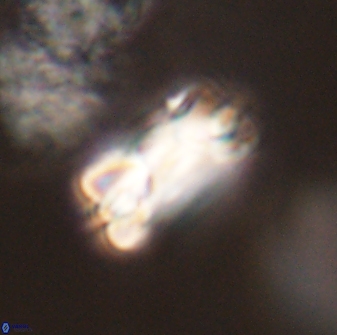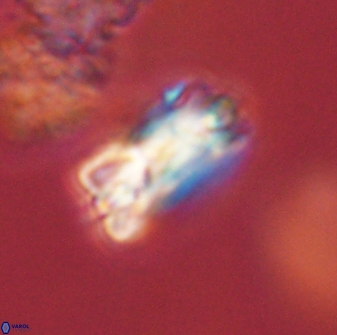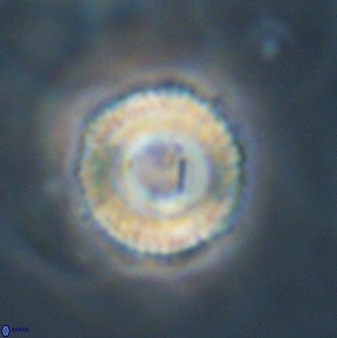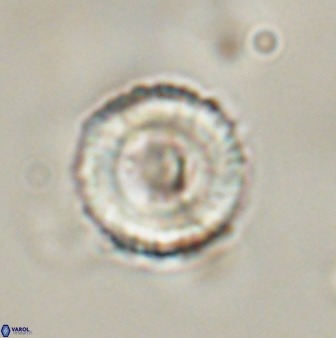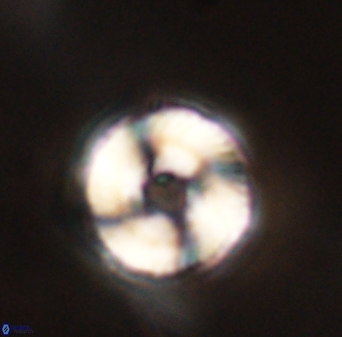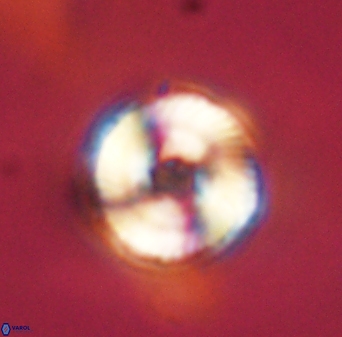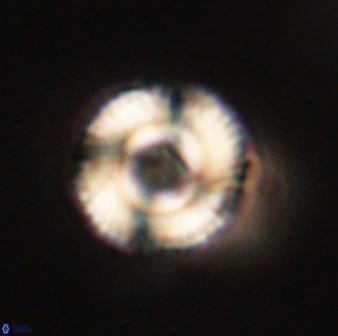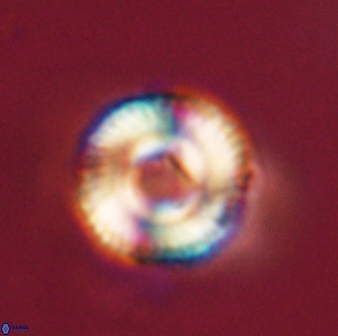Bomolithus falklandensis
Set number: 2326
-
1
-
2
-
3
-
4
-
5
-
6
-
7
-
8
-
9
-
10
-
11
-
12
-
13
-
14
-
15
-
16
-
17
-
18
-
19
-
20
10µm
Set number: 2327
-
1
-
2
-
3
-
4
-
5
-
6
-
7
-
8
-
9
-
10
-
11
-
12
-
13
-
14
-
15
-
16
-
17
-
18
-
19
-
20
10µm
Bomolithus falklandensis Bowman & Varol, 2021
The discs are approximately equal in diameter (best seen in the side view). The relatively low column is wide and parallel-sided and appears to be equal to or nearly equal to the width of the discs. The central area is occupied by a wide canal, surrounded by a central tube cycle. The width of the species may be indistinctly narrowing distally.
Height: 4.18μm; Column height: 1.87μm, Column diameter: 7.35μm; Diameter of proximal disc: 8.33μm, Diameter of the median: 7.87μm
Large (7.0–11.0μm) species of Bomolithus comprised of two discs and a column. The discs are of approximately equal diameter, appearing slightly convex (observed in the side-view). The moderately high column is wide (e.g. width>height), and cylindrical or parallel-sided, and is about equal in diameter to the discs. A wide canal with a central tube cycle occupies the column and discs. The distinct tube cycle appears narrow and smooth, with a larger central opening (circular-subcircular). The discs possess numerous segments (about 40–60). In the side-view, the species typically shows slight distal narrowing (toward the column) but may occasionally appear parallel-sided.
The discs and column appear yellowish under polarised light. In the distal view, the extinction lines are dextrogyre, whereas the extinction lines are laevogyre in the proximal view. When viewed under a gypsum plate, the horizontal axis of the coccolith lies within the blue sector, on the distal/column-side. Still, the vertical axis of the coccolith lies within the blue sector on the proximal/disc side. The discs and column are birefringent in plan view and side view.
Bomolithus falklandensis possesses a sizeable central opening with a distinct narrow tube cycle, a diagnostic feature for distinguishing the species from other Bomolithus. Besides, the slightly narrowing (distally) character of Bomolithus falklandensis is also a valid criterion for separating the species from other Bomolithus.
Bowman, A. R. & Varol, O. 2021. A Taxonomic Revision of Heliolithaceae - Applications in Resolving the Problematic Calcareous Nannofossil Biostratigraphy of the Paleocene. In: M. Montenary, M. (Ed.). Calcareous nannofossil biostratigraphy of the Stratigraphy and timescales. 6: 43-223.
